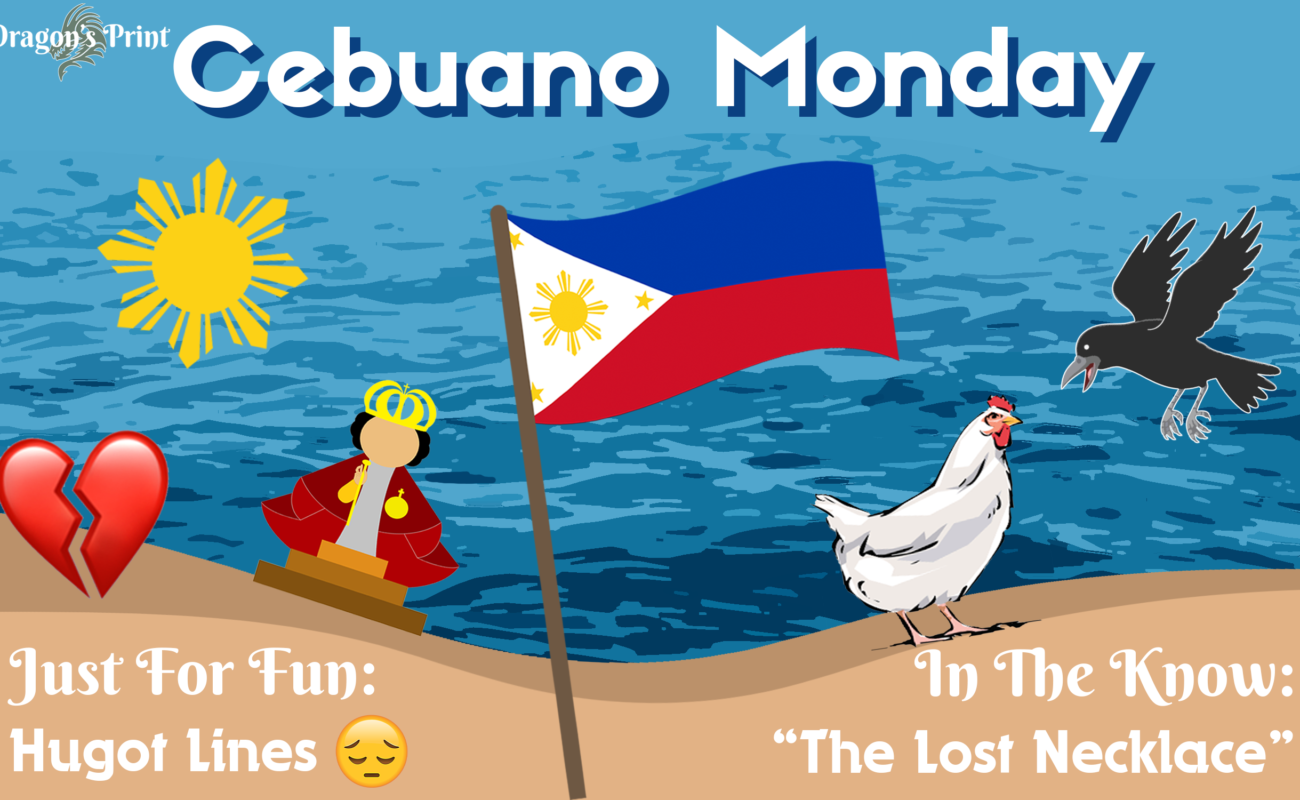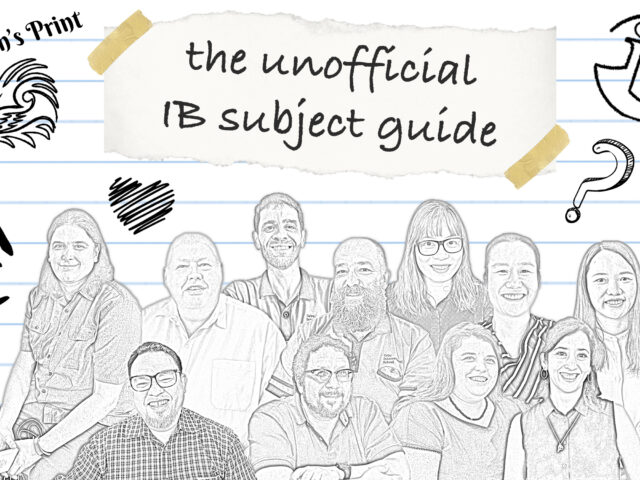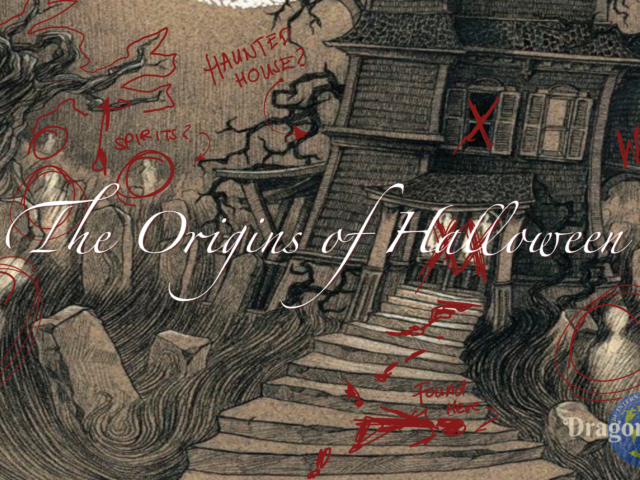Cebuano folklore is replete with tales and legends about the creation, heroism, moral conflict, and the triumph of good over evil. One of the oft-told tales is a favorite local fable that attempts to explain why chickens scratch the ground.
The tale is presented here in the Cebuano language (with English translation) as it is hoped that local readers would wish to savor the original story-telling tale in the region.
Here are some useful translations of Cebuano words from the tale:
- Adlaw = day
- Pangita = seek; to look for
- Makita = to be found; to be seen
- Kinahanglan = necessary
- Bayad = payment
- Bayran = to be paid
- Kondili = else; otherwise
- Sumbong = to tell
- Hari = king
- Kawat = to steal
- Mahadlok = to fear; to be scared
- Dungog = to hear
- Mahingawa = to worry; to be concerned
- Unsaon = how
- Magpadulong = to head for; to be on the way to
- Pista = fiesta
- Magdali = to be in a hurry
- Mobungat = to declare
- Dagit = to snatch; to take away
- Matag adlaw = every day
- Utang = debt
- Makit-an = to be found
- Hatag = to give
- Dayon = subsequently
- Hunong = to stop; to cease
- Kaon = to eat
- Mosugot = to agree; to give one’s consent
- Kasabutan = agreement; pact
- Lakip = including
- Padayon = to continue; to go on
- Lukat = to redeem
- Alahas = piece of jewelry
- Pinaagi = by means of
- Manok = chicken
May usa ka uwak nga nakapalit ug nindot nga kuwentas gikan sa usa ka ahente. Mapagarbohon kaayo siya sa maong alahas ug kini iya dayong gisul-ob sa iyang liog aron makita sa kadaghanan. Unya nilupad siya ug nahiabut sa usa ka hardin diin iyang nahimamat ang usa niya ka karaan nga higala, ang himungaan, kansa nagparada sinundan sa iyang mga piso. Matud sa himungaan kaniya, “Uy, kaanindot sa imong kuwentas. Mahimo ba’ng akong hulaman? Akong iuli kanimo ugma dayon sa walay palta.”
There was once a crow that had bought a fine necklace from a merchant. He was very proud of this ornament, which he immediately put around his neck so that everybody could see it. Then he flew away and came to a beautiful little garden where he met his old friend, the hen, strutting about with her chicks following her. The hen said to him, “Oh, what a fine necklace you have. May I borrow it? I will return it to you tomorrow without fail.”
Angay hibaw-an nga ang uwak nakagusto sa himungaan; busa, walay langan nga iyang gipahulaman ang iyang kuwentas sulod sa usa ka adlaw. Sa pagkaugma, sa pagbalik sa uwak, iyang naabtan ang himungaan ug ang mga piso niini nga nanagkakha sa yuta duol sa usa ka pader. “Asa na man ang akong kuwentas?” nangutana ang uwak.
Now, the crow liked the hen, so he willingly lent her the necklace for a day. The next morning, when the crow returned to get it back, he found the hen and her chicks scratching the ground near an old wall. “Where is my necklace?” asked the crow.
“Nawani,” tubag sa himungaan. “Gikuha gikan kanako sa akong mga piso gahapon samtang ako natulog, ug karon dili na sila makahinumdum kon diin nila nabutang. Tibuok adlaw namong pinangita, apan wala g’yud namo makit-i.”
“It is lost,” said the hen. “My chicks took it yesterday while I was asleep, and now they do not remember where they put it. We have been looking for it all day, yet we have not been able to find it.”
“Kinahanglan pagabayran nimo dayon,” matud sa uwak, “kondili, isumbong nako sa hari nga imong gikawat ang akong kuwentas.”
“You must pay for it at once,” said the crow, “or else I shall go to the king and tell him that you stole my necklace.”
Ang himungaan nahadlok sa pagkadungog niini, ug nahingawa dayon siya kon unsaon niya pagbayad. Ang uwak, kansa nagpadulong sa usa ka pista, nagdali ug nibungat, “Akong dagiton ang usa nimo ka piso isip bayad matag adlaw nga utangan ka kanako. Kon makit-an nimo ang kuwentas, ihatag dayon kanako, ug dason ako mohunong sa pagkaon sa imong mga piso.” Ang himungaan nisugot niining kasabutan kay siya nahadlok nga, kondili siya mosugot, mosumbong ang uwak sa hari.
The hen was frightened upon hearing this, and she began to wonder how she could raise the money. The crow, who was on his way to a fiesta1, said impatiently, “I will take one of your chicks every day in payment of what you owe me. As soon as you find the necklace, give it back to me. Only then will I stop eating your chicks.” The hen had to agree, for she feared that the crow would go to the king if she refused.
Hangtud karong panahona ang mga himungaan ug lakip ang ilang mga piso wala pa mohunong sa pagpangita sa kuwentas, ug ang mga uwak nagapadayon sa pagpalukat sa nawalang alahas pinaagi sa pagkaon sa mga piso. Ginaingon nga ang mga himungaan ug mga manok dili mohunong sa pagkakha sa yuta hangtud nga makit-an ang nawalang kuwentas.
Unto this day, both hens and chicks have not stopped looking for the lost necklace, and the crows continue to exact payment for the lost jewel by taking the chicks. It is said that the hens and chickens will never cease scratching the ground until the lost necklace is found.
There are few twists on how the tale is being told. One version of the tale is that the hawk courted the hen and offered the ring for the hen to wear as a sign of the latter’s commitment. However, the rooster who was supposed to marry the hen got mad and demanded that the hen throw the ring away, so she did. The version presented above was revised to avoid presenting the untruthfulness of the hen to children who are mainly the audience to such tales.
One moral of the tale is to always take care and return whatever you borrowed. What did you learn from the tale?
Article by Sij S. (Grade 12); Feature image by Katrina R. (Grade 12)
The views expressed in this article represent the personal views of the author and should not be taken to represent the views of Dragon’s Print and Cebu International School.
![]()




Russell Greene
Local myths and fables are always an interesting insight into the values of a culture.
Gloria Rodriguez D
I enjoyed reading this tale. A good start to learn Cebuano.